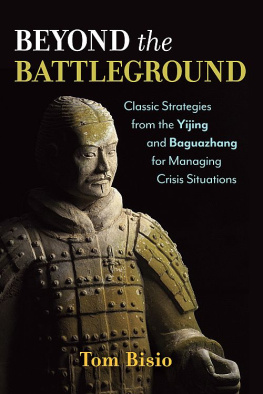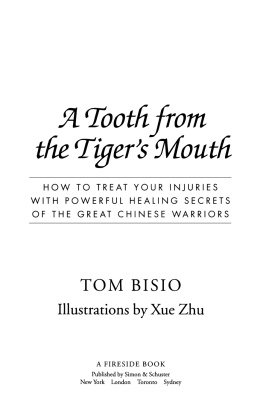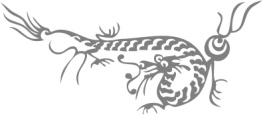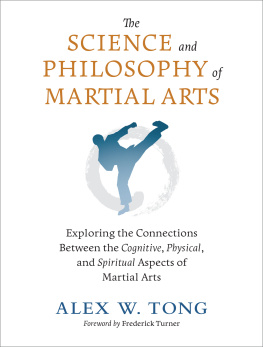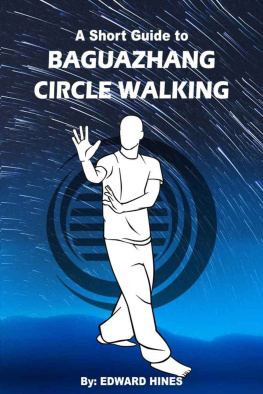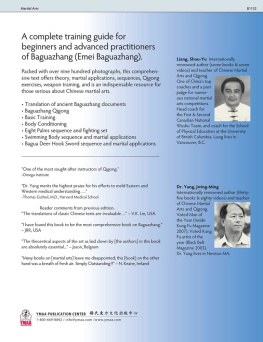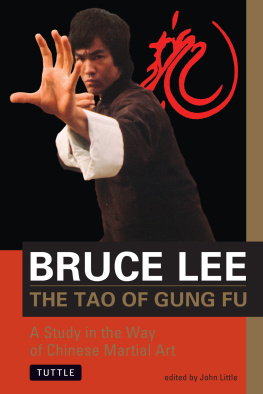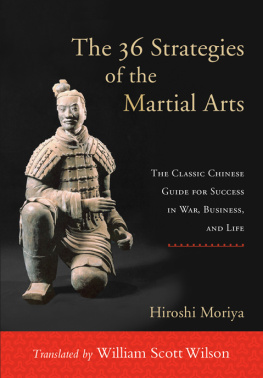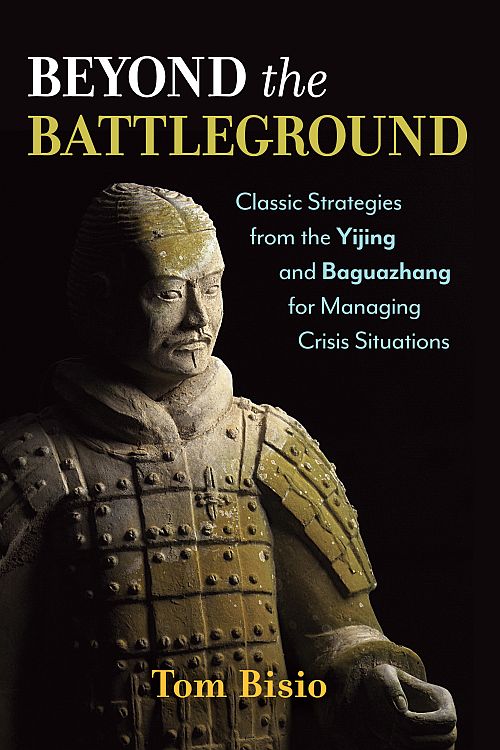BEYOND the BATTLEGROUND
Classic Strategies from the Yijing and Baguazhang for Managing Crisis Situations
Tom Bisio

BLUE SNAKE BOOKS
BERKELEY, CALIFORNIA
Copyright 2016 by Tom Bisio. All rights reserved. No portion of this book, except for brief review, may be reproduced, stored in a retrieval system, or transmitted in any form or by any meanselectronic, mechanical, photocopying, recording, or otherwisewithout the written permission of the publisher. For information contact Blue Snake Books c/o North Atlantic Books.
Published by
North Atlantic Books
Berkeley, California
Cover photo iStockphoto.com/Francis Wong Chee Yen
Cover design by Daniel Tesser
Beyond the Battleground: Classic Strategies from the Yijing and Baguazhang for Managing Crisis Situations is sponsored and published by the Society for the Study of Native Arts and Sciences (dba North Atlantic Books), an educational nonprofit based in Berkeley, California, that collaborates with partners to develop cross-cultural perspectives, nurture holistic views of art, science, the humanities, and healing, and seed personal and global transformation by publishing work on the relationship of body, spirit, and nature.
North Atlantic Books publications are available through most bookstores. For further information, visit our website at www.northatlanticbooks.com or call 800-733-3000.
Library of Congress Cataloging-in-Publication Data
Names: Bisio, Tom, author.
Title: Beyond the battleground : classic strategies from the Yijing and Baguazhang for managing crisis situations / Tom Bisio.
Description: Berkeley, California : North Atlantic Books, [2016] | Includes .
Identifiers: LCCN 2015037865| ISBN 9781623170066 (pbk.) | ISBN 9781623170073 (ebook)
Subjects: LCSH: Taoism. | Yi jing. | Martial artsChina. | Strategy. | Military art and scienceChina. | Conflict management.
Classification: LCC BL1923 .B56 2016 | DDC 303.6/9dc23
LC record available at http://lccn.loc.gov/2015037865
To my brother Joe
Acknowledgments
Endless thanks to my wife Valerie who helped me in so many ways with hand holding, listening, fixing computer problems, and in general putting up with my obsession to write this book. She also helped edit the original text book and critically analyzed some of my ideas. Without her support and encouragement, I would not have written it. Valerie, thank you for being there!
To my son Virgil for his interest in the project and in history in general. He asked questions, gave me input based his own reading, and provided constructive feedback. Virgil also did the great drawing of Zhuge Liang.
To my teachers in the internal martial arts who gave me an appreciation and basic understanding of the Yi Jing. My deepest thanks to Vince Black, Zhang Hua Sen, Li Gui Chang, Song Zhi Yong, Wang Shi Tong, Gao Ji Wu, and Zhao Da Yuan.
Thank you to all of my students for their input and thought-provoking questions.
Wes Tasker helped me to formulate a relationship between the Yijing hexagrams and the 64 hands of Ba Gua Zhang. We discussed and shared many of the historical source texts. Wes also helped me with heuristic theory and understanding the OODA loop He is a great friend and a valuable and treasured colleague. Thank You, Wes!
A heartfelt thanks to my good friend Huang Guo Qi. Huang helped me with fact finding, translation, and general advice on Chinese culture. My many trips to China for study and research would not have been possible without him. Huang was invaluable in helping me find information on Zhuge Liang and translating it from the Classical Chinese. He took the time to sit with me in Taiyuan and read through the translations character by character.
I thank Teja Watson for her careful copyedit, and a big thank you to Louis Swaim, who project edited the book. He pointed out inconsistencies and errors that I missed and in general put up with my impatience with the complex process of publishing. Louis, thank you for your patience and persistence.
Contents
Soon after publishing a book, I immediately think of all things I wish I had added to make the discussion more clear and more complete. Never has this been more true than with Strategy and Change. When North Atlantic Books expressed a desire to republish Strategy and Change and asked me to add additional material on the application of strategy and the Yijing (I Ching) to daily life, I was pleased to accept, because this is exactly what I felt was lacking in the first edition. Furthermore, attempting to apply these strategic principles to my own life led me to look beyond the military and martial applications of strategy to try to understand more clearly how these concepts relate to business, interpersonal relationships, and life in generalhence the new title Beyond the Battleground. Researching, discussing, and writing about these aspects of strategy and change has been illuminating for me personally, stimulating new thoughts about my own interaction with life in a constantly changing world. I feel the addition of this discussion on the application of the principles of strategy and change to daily life () brings the book full circle, transforming it from an examination of strategic thought to a meditation on strategy and adaptation to change and uncertainty.
Living is not easy, and life is full of unexpected curves and unforeseen events. Negotiating our own personal circumstances as they change and unfold within the world is a challenge for every individual. Knowledge of strategic thinking, and understanding the patterns of change operating in the world around us, can help us to navigate the uncertainties of life, while maintaining our own inner integrity. This in turn creates the possibility for living in concord with the world, by knowing that we have done everything possible to achieve harmony between who we are, what we do, and the effects and consequences of our engagement with the world. If this book in any way aids the reader in gaining greater insight into how to achieve some measure of this harmony, then it has been a useful and fulfilling labor.
Tom Bisio, March 2015
This book started as a ten-page essay on Ba Gua and military strategy and became an obsession that took me through piles of books, online research, numerous emails to China, and many sleepless nights with Yijing, the Classic of Change, hexagrams dancing through my head. The essay gradually morphed into something much larger in scope then I ever intended. Once I began, the possibilities multiplied along with the source material and it became a book. I fear in writing it I have only just scratched the surface of the subject, that my own understanding of Ba Gua, the Yijing, and military strategy is inadequate. This book is, on some level, a work in progress. I apologize in advance for any incorrect facts or historical simplifications and look forward to criticism.
Military strategy is to some degree the study of how to shape and manage crisis situations. On a fundamental level, crisis situations stem from a larger dynamic of individuals, groups, or nations attempting to overcome obstacles in their path in order to make manifest the individuals or groups will and intentions. Strategy itself manifests in how the individual or group reacts to changing events in relation to the interests of other individuals and groups, who are also interacting with these same events as they unfold. Martial arts can be viewed as an extension of military strategy, because these arts are largely a development or refinement of techniques and principles that were originally used in waging war. Both the martial arts and military strategy are concerned with methods of surviving and prevailing in adverse circumstances. Over thousands of years both disciplines have developed extensive and diverse techniques and principles of application.

